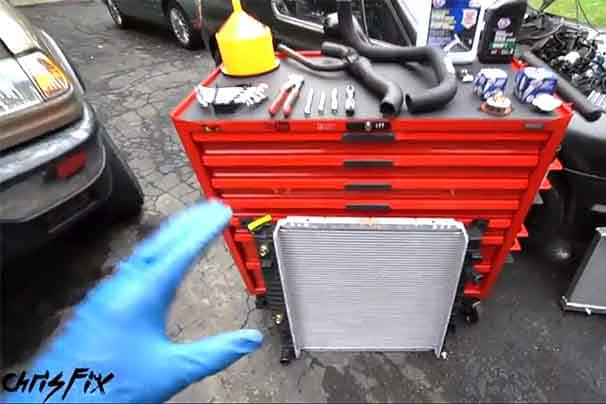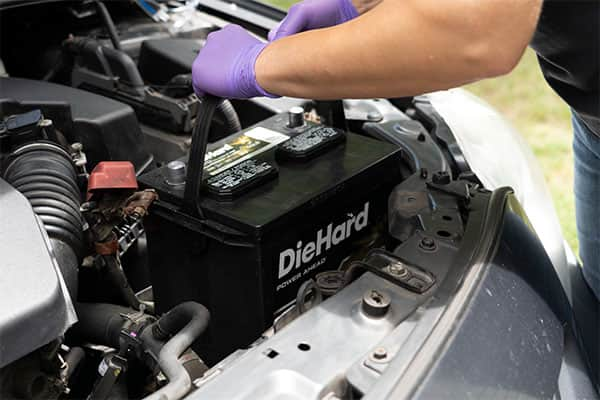
Let's say you just bought a used car, maybe picked one up for dirt cheap at an auto auction. It was a great score, but it also probably needs a bit of work. If it's missing the owner's manual, you might be confused about where to start. Fortunately, you can examine some common areas to take the mystery out of your ride. Here's how all those vehicle information stickers are helpful, what the info means, and where to find them.
Engine Size, Belt Routing, and More
One of your first questions might be: What engine does your new/used vehicle have? That's where the engine-information sticker comes in handy. It's usually white and affixed on the inside of the hood but is also sometimes found near the radiator. Don't assume you know the engine size, as manufacturers can offer a variety of engines within the same model year. The TPI 305 and 350 V8s in a 1990 Camaro look identical, but the sticker tells the difference. “Oh, it's just a 2004 Mustang V6," you say. Sure, but that year could have a 3.8L or 3.9L, and without checking the sticker, you won't know what you have.
A used car with unknown maintenance history is probably due to have the serpentine belt replaced. The engine sticker often has a diagram of serpentine belt routing. If you haven't purchased a repair manual yet, this diagram is useful to know when changing the belt. For emissions purposes, this sticker also specifies the year of manufacture and the emissions requirements the vehicle meets. All this is useful info to know when calling around for replacement part prices, so you can get an accurate quote on the right oxygen sensor. For an even more detailed look at the specifics of your vehicle, enter your VIN into a decoder on a trusted site like Hagerty.

All About Tires
Opening the driver's side door, you should see a rectangle sticker placed below the door latch, either on the door itself or on the door jamb (if it's not there, check the glove box). This one primarily lists tire info, which is useful if your vehicle has the factory wheel and tire sizes. When your tire pressure warning light comes on, or the tire looks low, take a look at this panel for the manufacturer's spec pressure. Just in case it's a staggered wheel setup (where rear tires are taller/wider), the sticker lists the correct tire pressure for front, rear, and spare tires. Note that these are the cold PSI numbers, so check and adjust pressure only after the tires have cooled. “Big deal—tire size is stamped on the tire," you say. Going back to our used car example above, maybe the tires are so old that the markings wore off. Maybe the previous owner installed wheels of questionable taste, so you're looking to go back to factory stock. Either way, this number is the max pressure and shouldn't be used for most vehicles. The tire sticker also lists the maximum weight of passengers and cargo the vehicle can safely transport.

Paint Codes
If your vehicle sees daily driver duties, it's going to earn some rock chips. That means it's time for some touch-up paint. If your Toyota Camry is silver, you're not alone, as it seems like most Camrys were painted silver. But you can't just order “silver" and get it right. Is it Classic Silver Metallic, or more of a Silver Pine Mica, or a shade of Driftwood Pearl? Fortunately, the factory makes it easy to take the mystery out of paint colors by using paint codes. Each factory color represents a specific formula of paint, named by a code. For example, the above Toyota silvers are 1F7, 6U0, and 4S2, respectively. Taking that paint code to your local Advance allows you to find exactly the right touch-up paint. By following along here, you can complete a seamless repair.
You'll find the paint code on a certification label, likely near the tire sticker in the door jamb. It lists the a lot of repeat info, including the manufacturer name, date of assembly, country of manufacture, gross vehicle weight rating, VIN, and stating that it meets all federal safety regulations for that year. This is also where you can find the paint color, usually a code after a descriptor like “EXT PNT."
Production Option Codes
When the factory builds a new vehicle, it isn't listed on the order with a long description of “Performance suspension; larger diameter sway bars, 6-way adjustable shocks, sport springs, etc." Rather than reading a huge description of what the vehicle should have, the option group receives a short production code. All manufacturers have their own versions, but GM calls them Regular Production Option codes, so we're using their RPOs here as they are the most well-known.
Look for your RPO codes inside the lid of the glove box or center console. The two- or three-digit alphanumeric codes each show all the options and equipment your vehicle left the factory with. This is less interesting with RPO codes like AK5 (driver's side airbag), but more interesting with 1LE (massive brakes) on a ZL1 (performance package). Even Z71 was just an option code for off-road suspension, but it earned enough street cred (trail cred?) to become badging on the Silverado's rear fenders. Ford and Chrysler have similar codes, and here's a site that will break them all down into plain language for you.
Any other good places to look for vehicle info? Let us know in the comments below.







